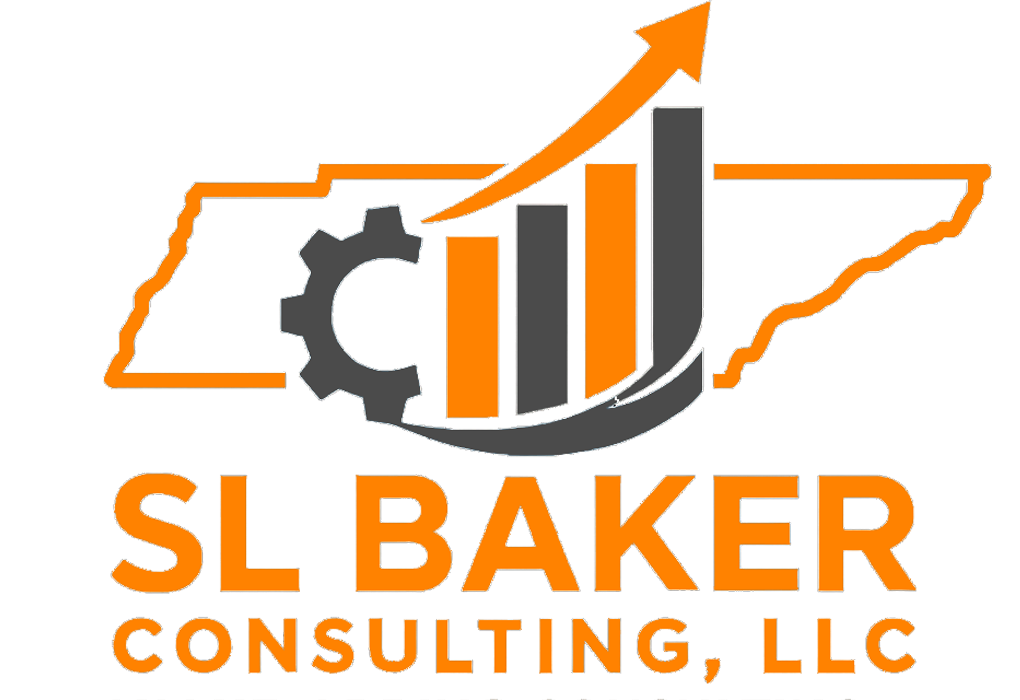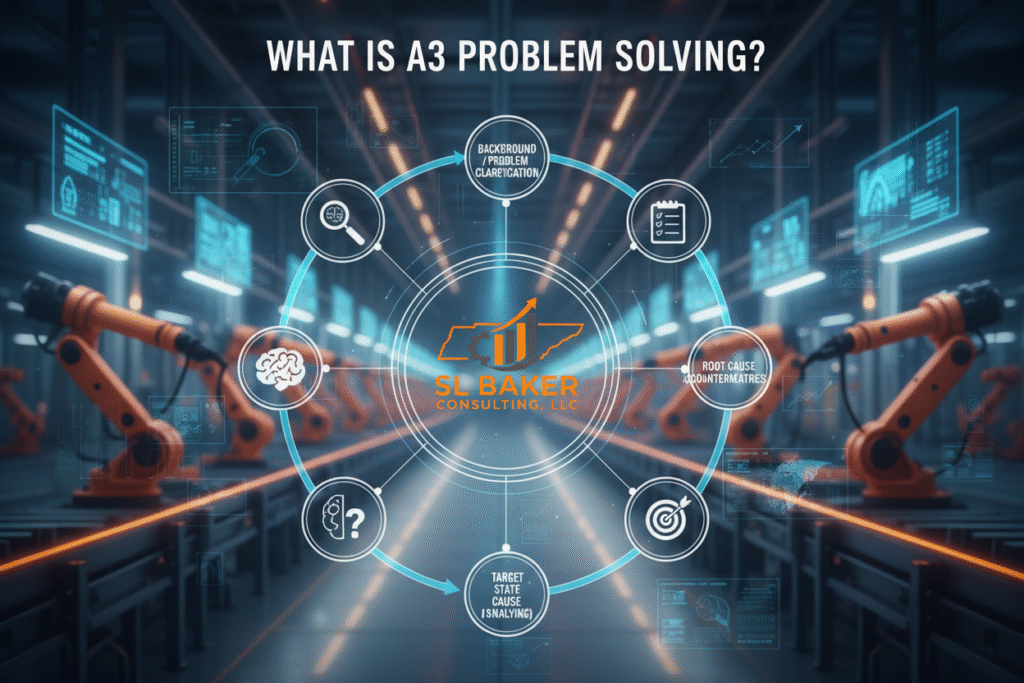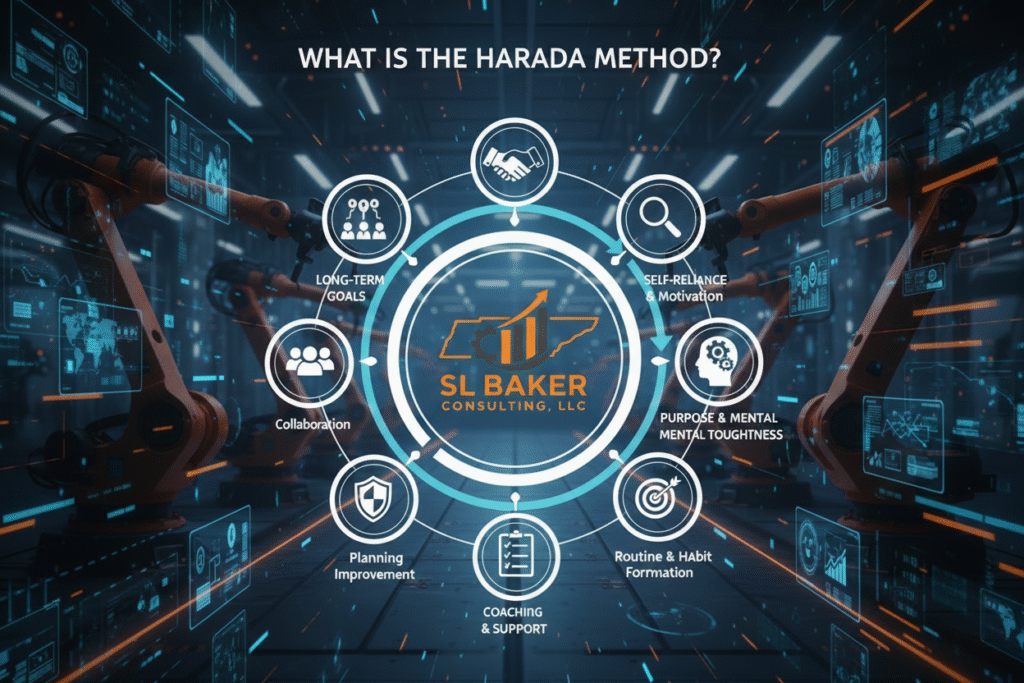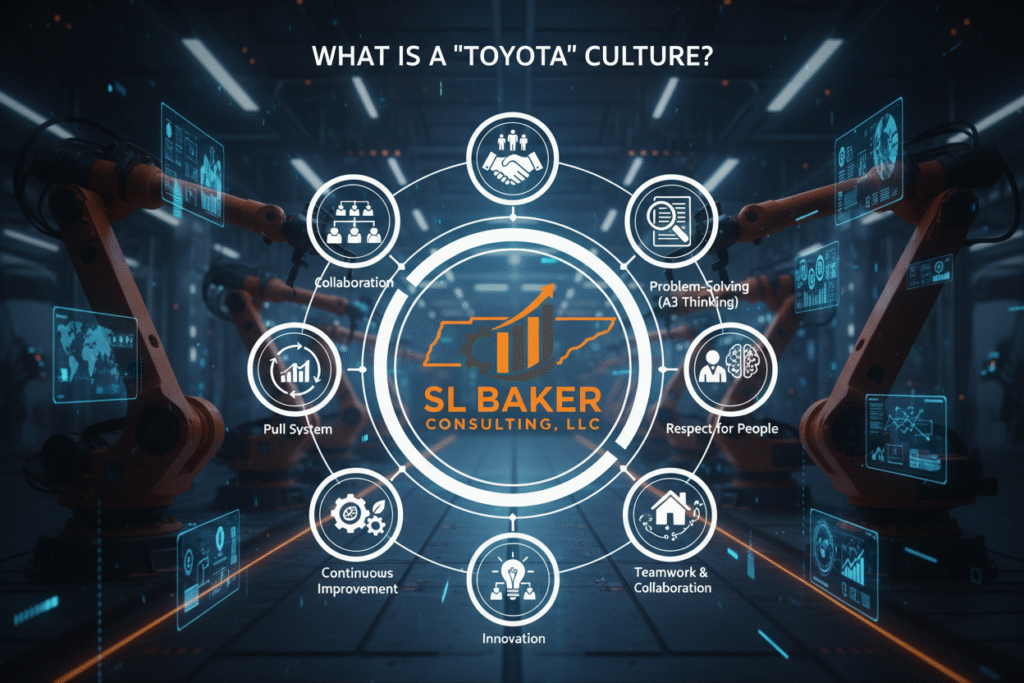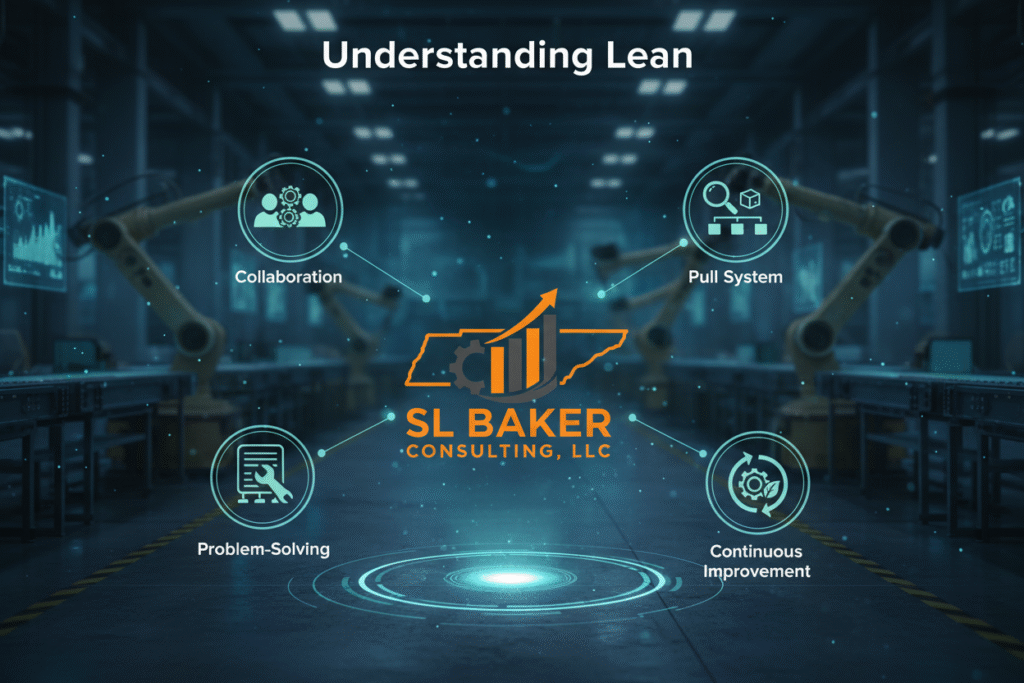A3 PDCA problem solving is a structured approach integral to the Lean manufacturing philosophy, designed to facilitate effective problem-solving and continuous improvement. Named after the A3 paper size on which it is traditionally documented, the A3 process embodies a systematic methodology that fosters deep analysis of issues, promotes learning, and encourages ownership and accountability among employees. This article explores the origins of A3 PDCA, its relationship with the scientific method, its capacity to identify root causes, and its vital role in creating a continuous learning organization.
The Origins of A3 PDCA
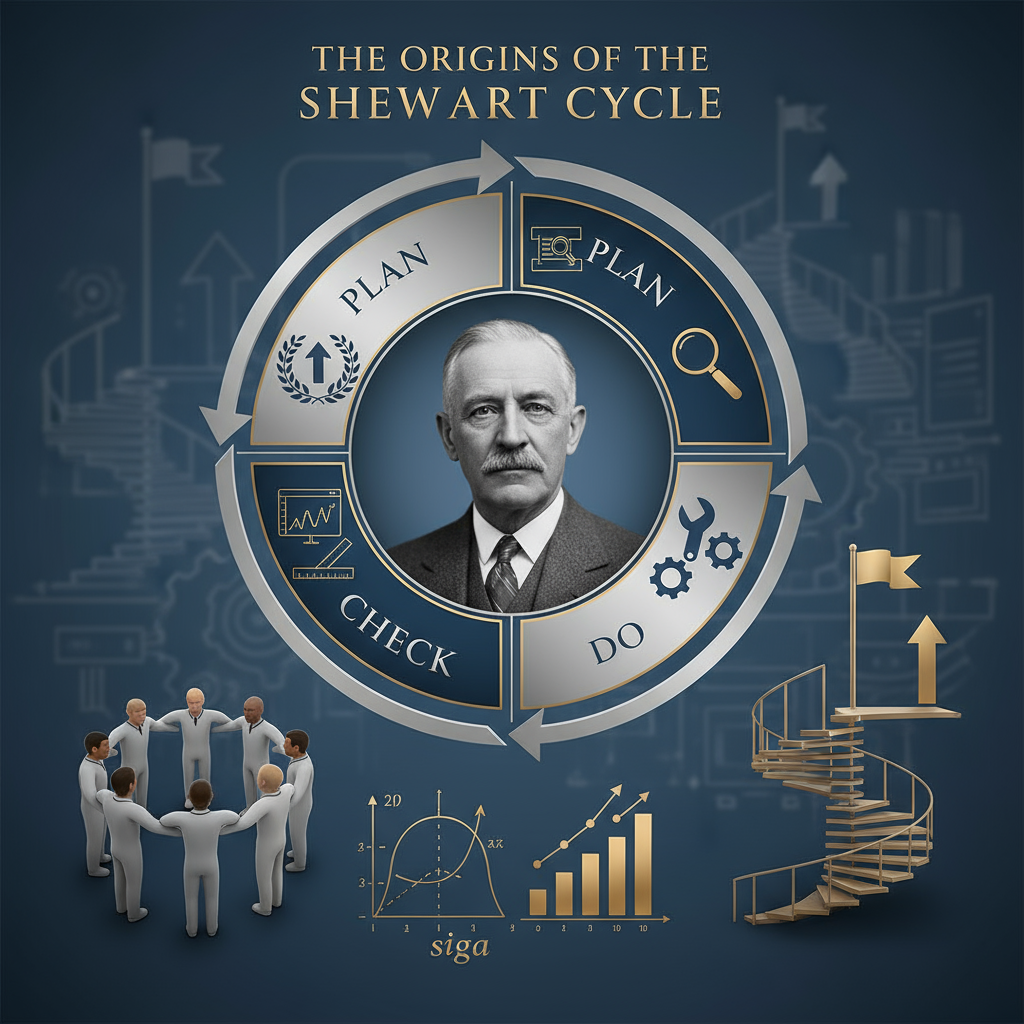
The A3 problem-solving format was developed within Toyota as part of the Toyota Production System (TPS). The term “A3” refers to the size of the paper (297 mm x 420 mm) traditionally used for documenting the problem-solving process. This concise format encourages clarity and succinctness, compelling practitioners to distill complex issues into essential elements.
The A3 process integrates the Plan-Do-Check-Act (PDCA) cycle, a framework created by Dr. Shewhart at Bell Labs, that emphasizes systematic experimentation and iterative improvement. PDCA was popularized by W. Edwards Deming, a prominent figure in quality management, and is foundational to the scientific method. This alignment with the scientific method enables organizations to approach problem-solving with rigor and objectivity, fostering a culture of inquiry and evidence-based decision-making.
The A3 PDCA Framework
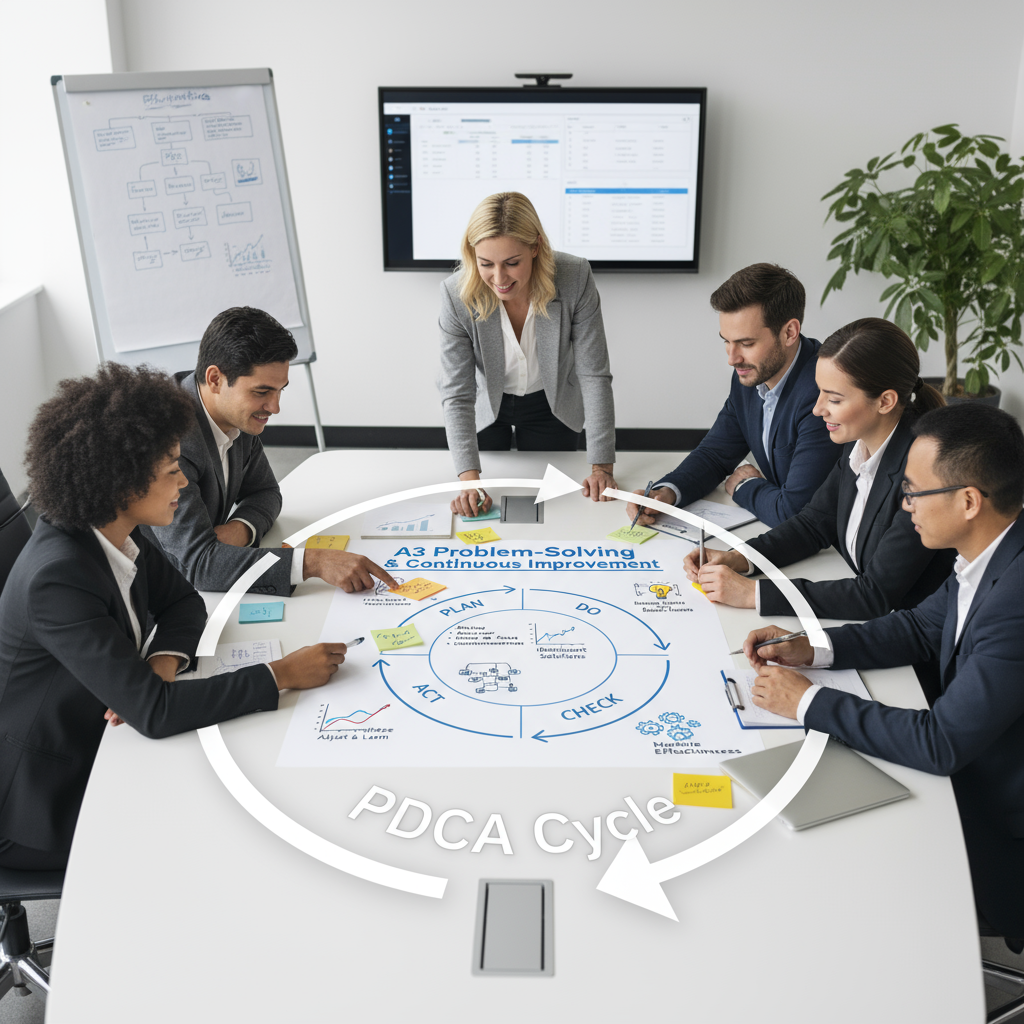
The A3 PDCA process consists of several key stages, each designed to address specific aspects of problem-solving:
- Plan: In this initial phase, the problem is clearly defined, broken down to its smallest chunk and the goals for resolution are established. This stage involves gathering pertinent data and conducting preliminary analyses to understand the context of the issue.
- Do: During this phase, the proposed solutions are implemented on a small scale. This allows for controlled experimentation and the collection of data to assess the effectiveness of the solutions.
- Check: After implementation, the results are evaluated to determine whether the desired outcomes were achieved. This stage involves comparing actual results against the goals set during the planning phase.
- Act: Based on the evaluation, organizations either standardize successful solutions or revise the approach to address any shortcomings. This iterative process emphasizes continuous learning and adaptation.
Identifying Real Root Causes
One of the most significant advantages of the A3 PDCA approach is its capacity to uncover the real root causes of problems. Traditional problem-solving approaches often address symptoms rather than underlying issues, leading to recurrence. The A3 process encourages teams to dig deeper into problems by employing techniques such as the “5 Whys” and fishbone diagrams.
By asking “why” multiple times, teams are guided to explore the layers of a problem rather than settling for superficial explanations. This thorough investigation fosters a more profound understanding of the factors contributing to issues, enabling organizations to implement solutions that address root causes effectively. It is critical during the solutioning process to always challenge the answers to obtain an engineered solution rather than a humanly dependent solution. This systematic identification of root causes is essential for eliminating problems, thereby preventing their recurrence.

Creating a Continuously Learning Organization
A3 PDCA problem solving is instrumental in fostering a culture of continuous learning within organizations. The iterative nature of the PDCA cycle encourages teams to experiment, learn from failures, and celebrate successes. This emphasis on learning transforms mistakes into valuable opportunities for growth, reinforcing a mindset that prioritizes improvement over blame.
In a continuous learning organization, employees are encouraged to share their insights and experiences, creating an environment where knowledge is collectively harnessed. This collaborative approach not only enhances problem-solving capabilities but also cultivates a sense of community and shared responsibility among team members.

Showing Respect for People
At its core, the A3 PDCA process embodies respect for people, a fundamental principle of Lean manufacturing. By involving employees in problem-solving efforts, organizations demonstrate that they value their contributions and insights. This respect fosters a sense of ownership among employees, as they are empowered to take an active role in addressing challenges within their work environment.
Moreover, the A3 format encourages transparency and open communication, allowing teams to share their findings and learnings with others. This collaborative spirit reinforces respect for individuals, as employees recognize that their input is meaningful and influential in shaping organizational practices.

Building Ownership and Accountability
A3 PDCA problem solving inherently builds ownership and accountability among employees. When individuals are engaged in the process of identifying problems, proposing solutions and implementing changes, they develop a strong sense of responsibility for the outcomes. This ownership extends beyond the immediate issue at hand; employees begin to view themselves as integral members of a continuous improvement system.
Furthermore, the structured nature of the A3 process provides clarity regarding roles and responsibilities, ensuring that everyone understands their contributions to the problem-solving effort. This clarity fosters accountability, as team members are aware that their actions impact the overall success of the initiative.

The Heart of a Sustainable Continuous Improvement System
A3 PDCA problem solving is the heart of any sustainable continuous improvement system. By embedding this structured approach into the organizational culture, companies can create a framework for ongoing enhancement that permeates all levels of the organization. The emphasis on systematic analysis, learning, and collaboration ensures that improvement initiatives are not isolated events but rather an integral part of daily operations.
As organizations adopt A3 PDCA, they cultivate an environment where continuous improvement becomes a shared responsibility. Employees at all levels are encouraged to identify opportunities for enhancement, leading to a culture that thrives on innovation and adaptability. This sustained commitment to improvement not only enhances operational efficiency but also contributes to employee satisfaction and engagement.

Conclusion
A3 PDCA problem solving is a vital tool for any manufacturing plant seeking to enhance its operational effectiveness and foster a culture of continuous improvement. By embracing this structured approach, organizations can systematically identify root causes, facilitate learning, and build ownership and accountability among employees.
The A3 process, with its roots in the scientific method, empowers teams to approach challenges with rigor and objectivity. It cultivates a continuously learning organization that values respect for people and encourages collaboration. Ultimately, A3 PDCA is not merely a problem-solving tool; it is the foundation of a sustainable continuous improvement system that drives long-term success for organizations.
Connect any time
Achieving your goals could not be easier.
We're here when you are ready.

